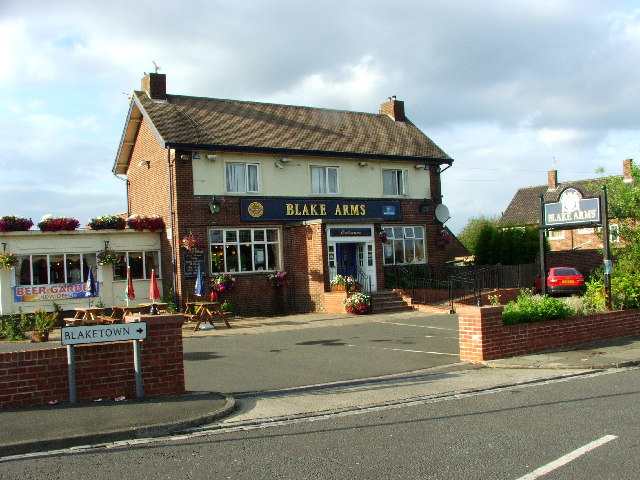Topics > Northumberland > Seghill > Seghill, 1855
Seghill, 1855
Extract from: History, Topography, and Directory of Northumberland...Whellan, William, & Co, 1855.
SIGHILL, SEGHILL, or SEDGEHILL, is a township and village in the parish of Earsdon, the property of Sir Francis Blake. The area of the township is 1,403 acres, and its rateable value £5,886. 10s. Population in 1801, 97; in 1811, 128; in 1821, 138; in 1831, 985; in 1841, 1,672; and in 1851, 1,869 souls. Sighill was created a district parish for ecclesiastical purposes in 1846, but for other purposes, not ecclesiastical, it still forms part of Earsdon parish. Sighill Colliery, in this township, is the property of Messrs. Carr and Co. It was opened in the year 1836, and gives employment to about 700 persons. The Sighill shaft is 600 feet deep, at the bottom of which there is an engine of 170 horse power, which draws the coal from the workings under ground. The mine ramifies in almost every direction, some of the passages reaching as far as Burradon, where there is another shaft by which visitors to the mine may ascend. The distance under ground is three miles, and over ground two miles.
THE VILLAGE of Sighill is situated on the north side of the Seaton Burn, seven miles N.N.E. from Newcastle. THE CHURCH is a handsome stone structure, in the Gothic style, erected in 1848, and capable of accommodating 530 persons. A grant of £220, in aid of its erection was made by the "Incorporated Society for promoting the enlargement and building of Churches,” on condition that seats for 426 persons should be set apart and declared free and unappropriated for ever. The interior arrangements of this edifice are very neat, and the softened light which streams through its beautifully stained eastern window, adds materially to the general impressiveness of the structure. The church is surrounded by a burial ground of two acres, inclusive of the site occupied by the sacred edifice. The living is a perpetual curacy, the patronage of which is vested in the Crown and the Bishop of Durham, who present alternately. Rev. H. Bunbury, incumbent.
The Wesleyan and Primitive Methodists have places of worship here.
The Blyth and Tyne Railway Company have a station at the village.
Directory
POST OFFICE, SIGHILL - William Arthur, Postmaster. Letters -arrive here from Newcastle at 10-30 a.m., and are despatched thereto at 5-5 p.m.
|
Anderson James, schoolmaster Arthur Wm. grocer, flour, and provision dlr Barras Edward, tailor, Blaketown Barras James, vict. and butcher, Blake’s Arms Inn Carr Charles, Esq. Sighill House Colville William, tailor Elliott Joseph, grocer, flour, and prov, dlr Embleton John, miller, Sighill Mill Forster John, foreman smith, Sighill Colliery; ho. Sighill Fryer Jobn under viewer, Sighill Colliery Hogg Ralph, joiner and cartwright Hordon John, day school Horsley William, engineer on the Blyth and Tyne Railway; ho. Sighill |
Hudson William, tailor Martin john H. colliery agent, Middle Farm Oliver Wm. grocer, flour, and provision dlr Patterson Thomas, butcher Ramshaw Luke, foreman engineer, and grocer, flour, and provision dealer Reed James, farmer Rutter Henry, smith Stephenson Wm. shoemaker, Blaketown Temperley Edward, farmer Temperly , farmer and overseer Thompson Gavin, land Agent, Middle Farm Turner Isabella, vict. Rope and Anchor Inn Wallace Henry, grocer, flour, and provision dealer Wilkin James, farmer, Sighill Mill |








